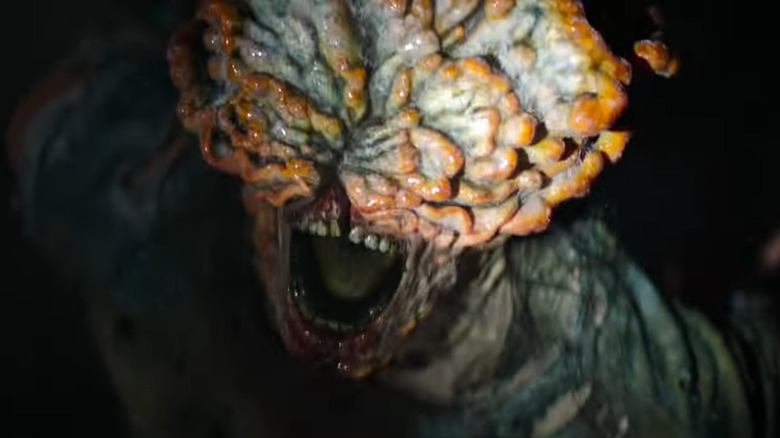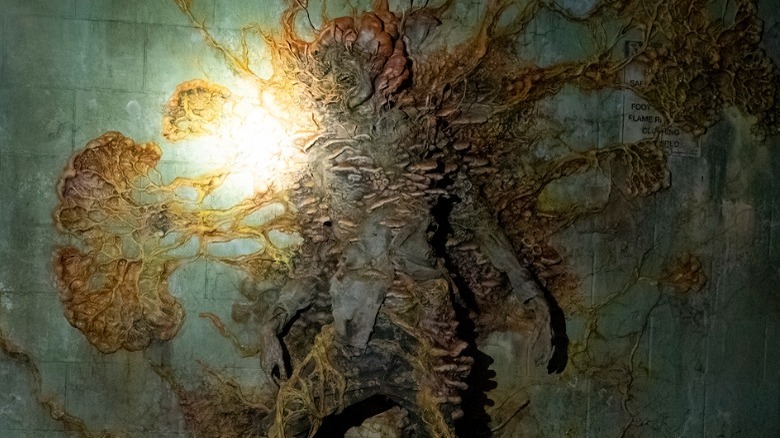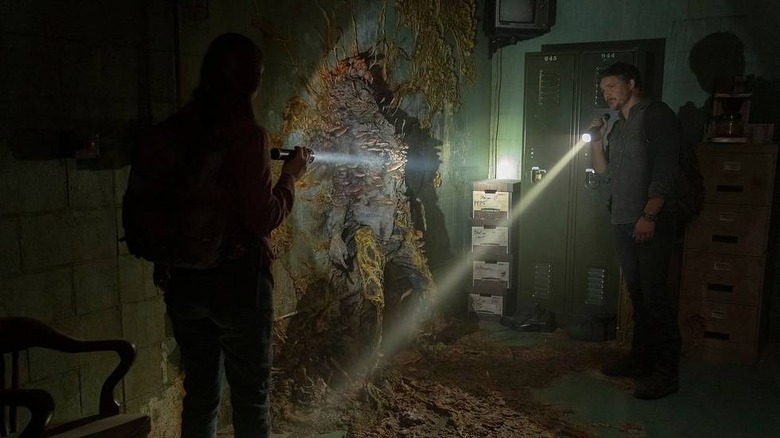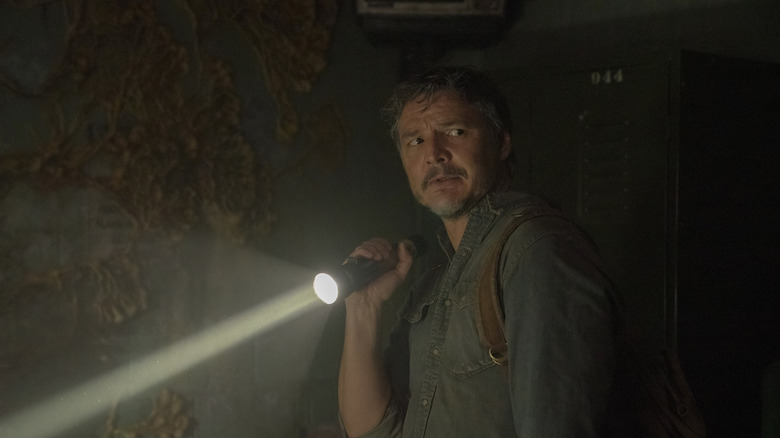The Disturbing Cordyceps Fungus In HBO's The Last Of Us Is Actually Real
For those expecting to see a one-to-one recreation of Naughty Dog and Sony's 2013 PlayStation 3 game, "The Last of Us," in the 2023 adaptation by HBO, the opening likely came as quite the surprise. Instead of opening with Sarah (Nico Parker) giving Joel (Pedro Pascal) his birthday present, we instead jump back to 1968, where we see an epidemiologist named Dr. Neuman (John Hannah) warn the world of a fungus called cordyceps, which can take over the minds of ants and bend them to their will.
In the world of "The Last of Us," which although grounded for a zombie show and game, is still full of impossible creatures and abominations, one might be forgiven for assuming that the cordyceps fungus is simply a fictional creation of the imaginative minds of the series. However, we regret to inform you that the cordyceps fungus is real, and it's just as scary as it sounds.
Ophiocordyceps unilateralis infects ants to do their bidding
Much like the scientist discussed in the premiere, there are types of fungi that don't feed on the dead but on the living. One such fungus is Ophiocordyceps unilateralis, which National Geographic reported on in 2019. The fungus floods ants' brains with chemicals, takes over their muscles, and controls them to move to the perfect height and temperature for the fungus to grow, then spreads its spores to control even more ants.
There are a couple of differences between how this fungus works and how it works in humans in "The Last of Us," however. For starters, although it affects the ants' brains, it doesn't actually invade them, as scientists found no fungal cells within the ants' brains, so the fungal outgrowths found in Infected such as Clickers in the show and games wouldn't be possible with this fungus, even if it were somehow able to infect humans.
However, there is another fungus that does create a scarily similar outgrowth from the head.
The fungus O. sinensis creates a sickening outgrowth from its hosts' heads
Don't Google pictures of this process if you're queasy, but according to National Geographic, the fungus O. sinensis can form a growth from the heads of moth caterpillars.
"One related species, O. sinensis, colonizes ghost moth caterpillars and erupts from their head like a unicorn horn," National Geographic writes. While you couldn't pay us enough to go anywhere near those things, the infected caterpillars are actually used in traditional Tibetan and Chinese medicine to cure all sorts of diseases.
Not all types of cordyceps are malignant toward their hosts, as species that take root in Japanese cicadas may help them process nutrients from sap. Imagine an alternate universe to "The Last of Us" where instead of causing an Infected horde, the cordyceps fungus becomes a popular snack to boost humans' digestion! We'd call it: "The Snacks of Us."
But those aren't the only fungi that can take over their hosts' minds.
Other fungi can infect flies and cicadas, taking over their minds
It's not only cordyceps that can take over its hosts' behaviors. Again according to National Geographic, the Entomophthora muscae, translated from Greek as the metal-sounding "insect destroyer of the fly," is able to take over flies' actions and cause them to fly to the perfect height for spore dispersal, which it does before then striking a "death pose," the perfect angle for the fungus to grow from its corpse and spread more spores.
There is also the Massospora cicadina, which drugs its cicada hosts so much that it causes its abdomen to partially fall off. The rest is similar to what other fungi do to their hosts: move it to an ideal climate for spreading spores, kill it, then take over its body and do it all over again.
The one thing consistent in all of these cases, however, is that infection occurs exclusively through airborne spore dispersal, an element that was present in the games but was removed from the HBO show. Although "The Last of Us" certainly did its homework, the part about infecting its hosts by biting them appears to be purely the work of zombie fiction.
"The Last of Us" airs on HBO and HBO Max Sundays at 9 p.m. ET.



